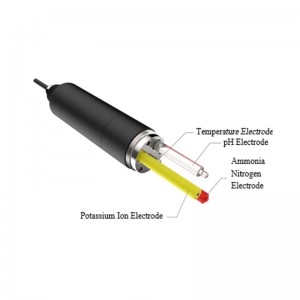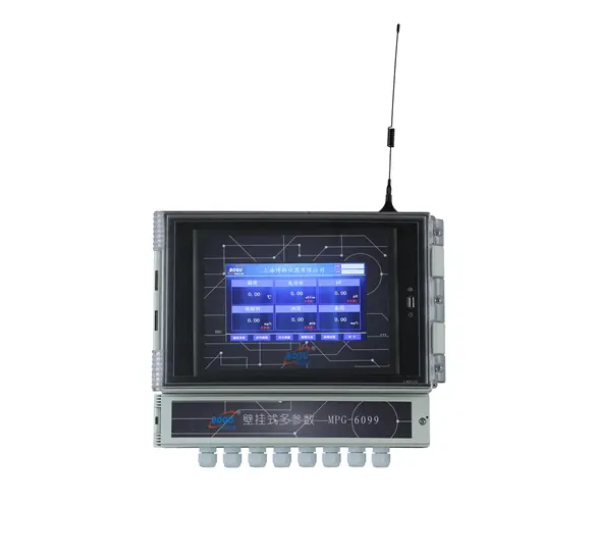What can an IoT ammonia sensor do? With the help of the development of Internet of Things technology, the process of water quality testing has become more scientific, fast, and intelligent.
If you want to get a more powerful water quality detection system, this blog will help you.
What Is An Ammonia Sensor? What Is A Smarter Water Quality Analysis System?
An ammonia sensor is a device that measures the concentration of ammonia in a liquid or gas. It is commonly used in water treatment plants, aquaculture facilities, and industrial processes where the presence of ammonia can be harmful to the environment or human health.
The sensor works by detecting changes in the electrical conductivity of a solution caused by the presence of ammonia ions. The readings from an ammonia sensor can be used to control the treatment process or alert operators to potential issues before they become problems.
What Is a Smarter Water Quality Analysis System?
A smarter water quality analysis system is an advanced system that uses the latest technologies and techniques to monitor, analyze, and manage water quality.
Unlike traditional water quality analysis systems, which rely on manual sampling and laboratory analysis, smarter systems use real-time monitoring and automated analysis to provide more accurate and timely information.
These systems can incorporate a range of sensors, including pH sensors, dissolved oxygen sensors, and ammonia sensors, to provide a comprehensive view of water quality.
They can also incorporate machine learning and artificial intelligence to improve the accuracy of the analysis and provide insights into trends and patterns that may not be apparent to human operators.
Benefits of a Smarter Water Quality Analysis System
There are several benefits to using a smarter water quality analysis system, including:
- Improved accuracy: Real-time monitoring and automated analysis can provide more accurate and timely information about water quality.
- Faster response times: Smarter systems can detect changes in water quality more quickly, allowing operators to respond faster to potential issues.
- Reduced costs: By using real-time monitoring and automated analysis, smarter systems can reduce the need for manual sampling and laboratory analysis, saving time and money.
How To Build A Smarter Water Quality Analysis System With IoT Digital Ammonia Sensors?
To build a smarter water quality analysis system with IoT digital ammonia sensors and a multi-parameter ammonia nitrogen analyzer, follow these steps:
- Install the IoT digital ammonia nitrogen sensor in the water source to be monitored.
- Connect the IoT digital ammonia nitrogen sensor to the multi-parameter ammonia analyzer using the RS485 Modbus protocol.
- Configure the multi-parameter ammonia analyzer to monitor the desired parameters, including ammonia nitrogen.
- Set up the data storage function of the multi-parameter ammonia analyzer to store the monitoring data.
- Use a smartphone or computer to remotely monitor and analyze the water quality data in real time.
The suggestions here are for informational purposes only. If you want to build a smarter water quality analysis system, it is best to directly ask BOQU’s customer service team for more targeted solutions.
Building a smarter water quality analysis system with IoT digital ammonia sensors involves using advanced technologies to monitor and manage water quality in real time.
By integrating IoT sensors, such as the BH-485-NH digital ammonia nitrogen sensor, and a wall-mounted multi-parameter ammonia analyzer like the MPG-6099, you can create a comprehensive water quality monitoring system that can be remotely managed and analyzed.
1) Benefits of IoT Digital Ammonia Sensors
IoT digital ammonia sensors offer several benefits, including:
- Real-time monitoring:
Digital sensors can provide real-time data on ammonia levels, allowing for faster response times to potential issues.
- Increased accuracy:
Digital sensors are more accurate and reliable than traditional sensors, resulting in more accurate water quality data.
- Reduced costs:
By automating the monitoring process, IoT sensors can reduce the need for manual sampling and laboratory analysis, saving time and money.
- Remote management:
Digital sensors can be remotely monitored and managed, allowing operators to access data from anywhere at any time.
2) Benefits of Wall-Mounted multi-parameter Ammonia Analyzer
Wall-mounted multi-parameter ammonia analyzers offer several benefits, including:
- Comprehensive Analysis:
Wall-mounted multi-parameter ammonia analyzers are designed to measure multiple parameters simultaneously, providing a more comprehensive view of water quality.
This allows operators to monitor various parameters such as temperature, pH, conductivity, dissolved oxygen, turbidity, BOD, COD, ammonia nitrogen, nitrate, color, chloride, and depth.
- Data Storage:
Wall-mounted multi-parameter ammonia analyzers also have data storage capabilities, allowing for trend analysis and long-term monitoring.
This feature can help operators identify patterns in water quality over time and make informed decisions about treatment processes and maintenance.
- Remote Management:
Wall-mounted multi-parameter ammonia analyzers can be remotely managed, allowing operators to access data from anywhere at any time.
This remote management feature is especially beneficial for operators who need to monitor water quality in multiple locations or for those who want to monitor water quality in real time.
By combining IoT digital ammonia sensors and wall-mounted multi-parameter ammonia analyzers, you can create a smarter water quality analysis system that offers real-time monitoring, increased accuracy, reduced costs, and remote management.
This system can be used in a variety of applications, including secondary water supply, aquaculture, river water quality monitoring, and environmental water discharge monitoring.
Why Choose BOQU’s Ammonia Sensor?
BOQU is a leading manufacturer of water quality sensors, including ammonia sensors. Their ammonia sensors are designed to provide accurate and reliable measurements of ammonia levels in the water, making them a popular choice for a wide range of applications.
High-Quality and Reliable Measurements:
BOQU’s ammonia sensors are designed to provide high-quality and reliable measurements of ammonia levels in the water. The sensors use ion-selective electrode technology, which is highly accurate and reliable, even in challenging environments.
The sensors are also designed to be resistant to fouling, corrosion, and interference from other ions in the water, ensuring accurate measurements over time.
Easy to Use and Maintain:
BOQU’s ammonia sensors are designed to be easy to use and maintain. The sensors are typically installed in line with the water system and are designed to be easily replaceable when necessary. They also require minimal calibration, which reduces the time and effort required to maintain them.
Wide Range of Applications
BOQU’s ammonia sensors are suitable for a wide range of applications, including water treatment, aquaculture, and industrial processes. The sensors can be used to monitor ammonia levels in real time, providing operators with immediate feedback on water quality.
Cost-Effective
BOQU’s ammonia sensors are cost-effective, making them a popular choice for a wide range of businesses and organizations. They offer accurate and reliable measurements at a lower cost than many other sensors on the market, making them an excellent choice for businesses looking to monitor water quality while keeping costs under control.
Final words:
BOQU’s ammonia sensors are cost-effective and easy to use, making them a popular choice for water treatment facilities, aquaculture operations, and industrial processes.
The sensors can be used to monitor ammonia levels in real time, providing operators with immediate feedback on water quality.
Post time: Apr-20-2023






